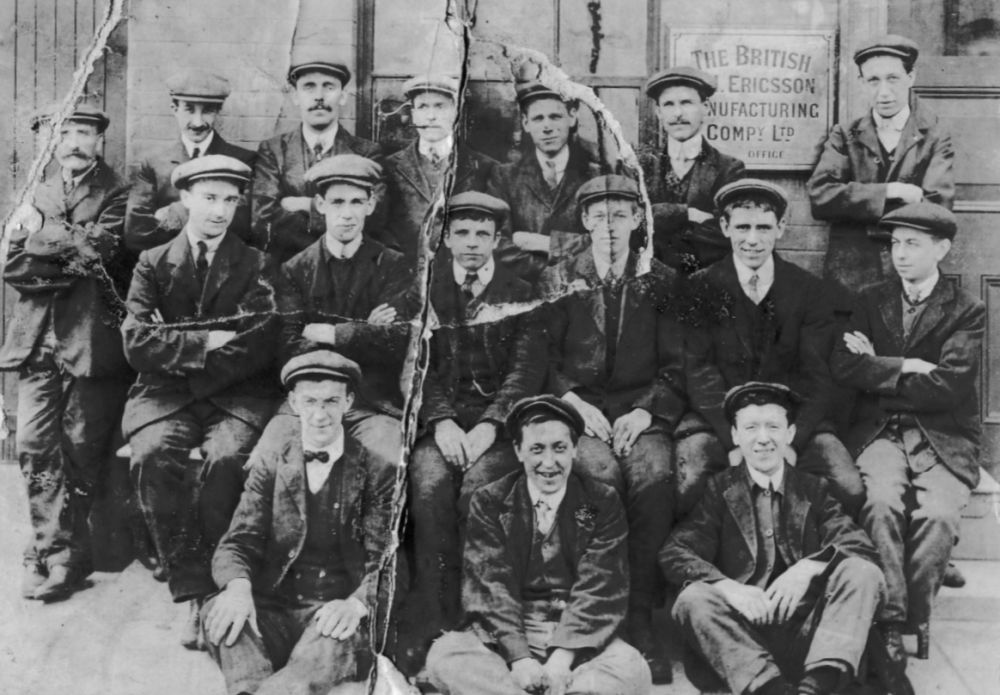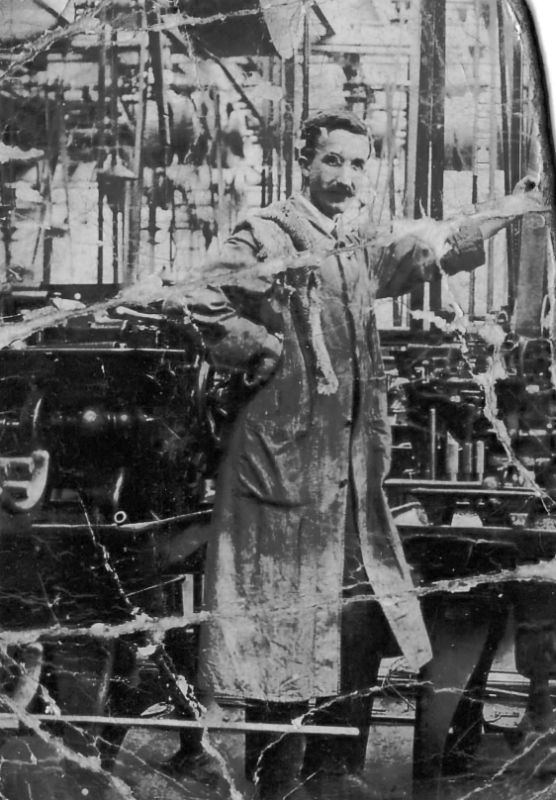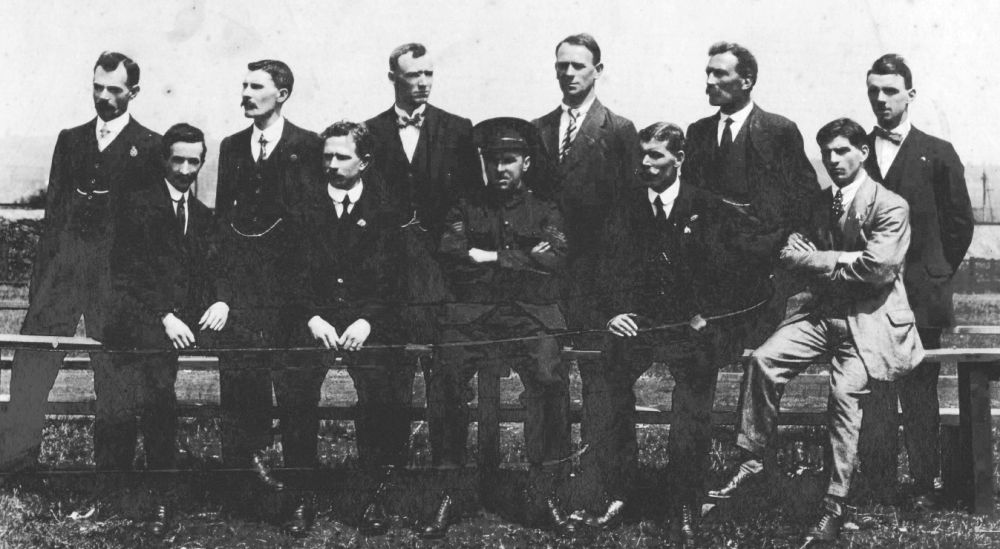Thomas Guthrie Savage at Ericssons, from c1910

|
Thomas Guthrie Savage (1884-1927) was born in Liverpool, the youngest child of Robert Savage, a clerk, and his first wife Elizabeth (née
Meade) who died when Thomas was only 3 years old.
By 1910, perhaps seeking a greater variety of work than was available in the docks where he had first worked as a messenger, he had taken a job
at the new state-of-the-art factory in Beeston that had then recently been opened by British L M Ericsson Manufacturing Co. Ltd. The above photo
shows Thomas (2nd Left on the top row) with a group of colleagues, probably in his early days at Ericssons.
Thomas boarded with the family of John William and Betsy (née Denton) Dalton in a house apparently associated with Nevilles' Factory, in Chilwell, on the Beeston
boundary, where John worked as a night watchman and stationary engine driver. In April 1911, Thomas married John and Betsy's daughter, Dorothy May Dalton.
at St Mary's Parish Church in Attenborough, Notts. They were to have six children.
At Ericssons, Thomas took charge of an automatic lathe or milling machine, part of impressive banks of machines that were then manufacturing telephone parts
in great numbers. The image on the right show him standing alongside that machine.
When war came in 1914, there was a never-ending demand for men to serve. In the early part of hostilities, this was maintained by voluntary enlistment - more than
1 million in the first 12 months - but this became impossible to maintain and, by 1916, the Government had been compelled to introduce compulsory conscription
for those of fighting age, eventually including those who were married. But there were exemptions that applied to some specific occupations and for key workers in
industries involved in essential war-work. This category of what was known as Reserved Occupations would have included such essential workers at Ericsson's Beeston
factory which was then involved in essential war-work.
It appears that this included Thomas as well as many of his colleagues. The image below is believed to show him (probably standing, 2nd left) as part of a group who
were exempted from conscription in this way. Many, if not all, appear to be wearing the On War Service Badge which was awarded to acknowledge the contribution made by those
on the Homefront. It is suggested that, by this time, Thomas had been directed to work at Woolwich Arsenal where his skills were required.
After the war, before 1921, he moved with his family to Crayford in Kent where he took a job at the Vickers factory. Eventually out of work, he returned to Liverpool.
where, sadly. he died of TB in 1927.
|

|

|
These images have been kindly provided by Thomas's gt-granddaughter, Michelle Carruthers.
As aways, please get in touch if you can identify anyone on the photographs or add detail.
|
Close this window to continue
|  |


